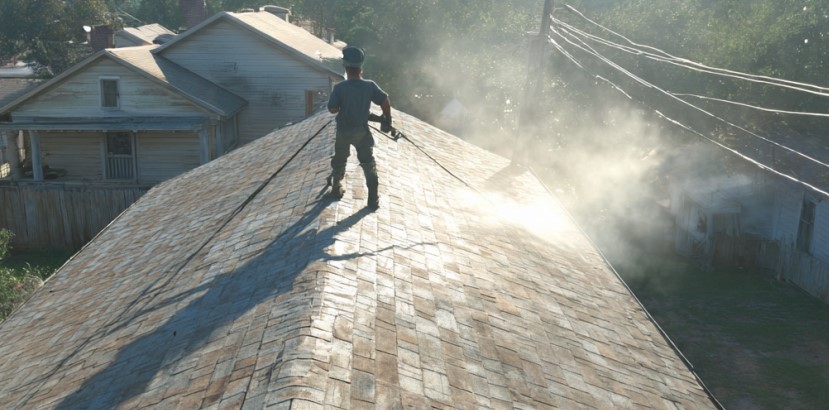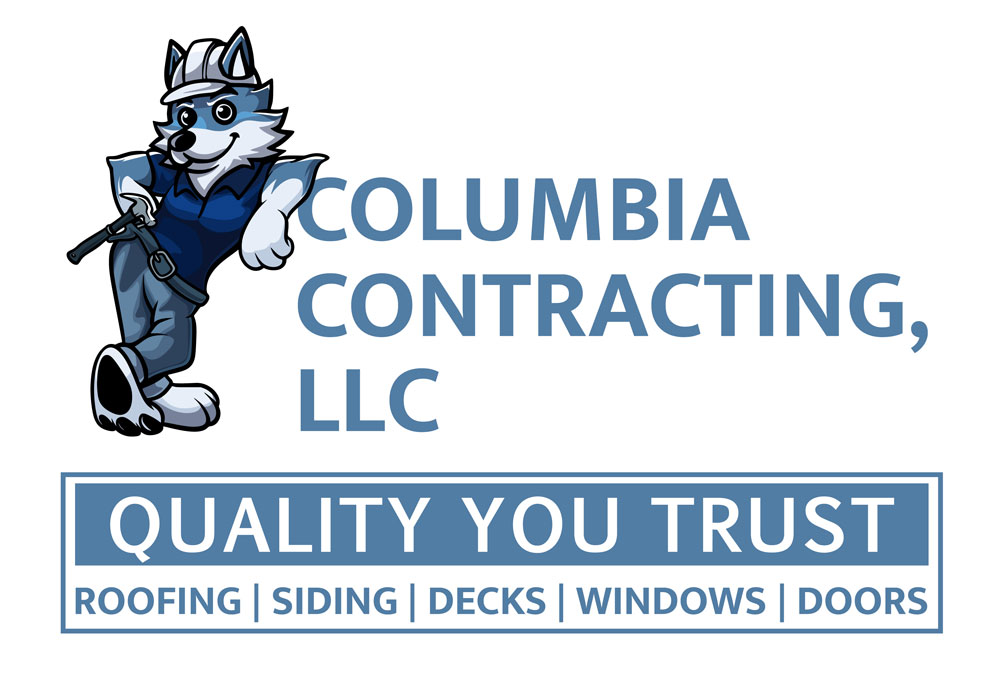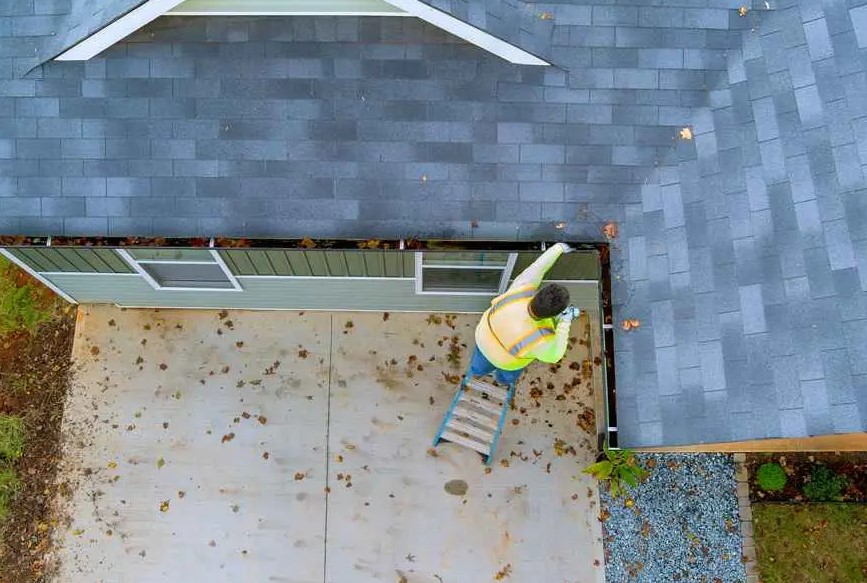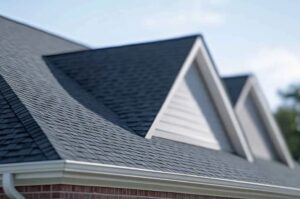Don’t Let Your Roof Become a Science Experiment This Summer
Summers in Fredericksburg are hot, humid, and downright sticky. While you’re battling the AC bill indoors, your roof is fighting its own battle against moss, algae, and mold. These green and black streaks aren’t just an eyesore — they’re a red flag for long-term roof damage.
If you’ve spotted discoloration or fuzzy patches on your shingles, you’re not alone. Virginia’s humid climate makes moss and algae growth a common issue. The good news? With a little knowledge and some preventive steps, you can keep your roof looking sharp and performing at its best.
Key takeaways homeowners should know:
- Moss and algae thrive in humidity and shade
- Left untreated, they can shorten roof lifespan
- Proper cleaning and prevention save you thousands in repairs
- Professional help ensures safe and effective roof algae removal
Want peace of mind before the next storm? Columbia Contracting LLC offers free inspections and professional roof cleaning solutions.
Why Moss and Algae Love Fredericksburg Roofs
To understand roof mold prevention, you first need to know what causes growth in the first place. Moss and algae aren’t random — they need specific conditions to thrive.
- Humidity and heat: Virginia’s summers provide the perfect damp, warm environment.
- Shade from trees: Roofs under heavy canopy tend to stay damp longer.
- North-facing slopes: These areas dry out slower, making them moss magnets.
- Organic debris: Leaves and twigs collect moisture, feeding growth.
What starts as a few black streaks of algae can quickly turn into a moss-covered patch that traps moisture against shingles. Over time, this leads to shingle deterioration, leaks, and even structural damage.
What to Consider Before Tackling Roof Algae Removal
Before you grab a ladder and a hose, pause. Roof cleaning isn’t as simple as scrubbing the deck. Here’s what you need to think through:
- Safety: Wet, mossy shingles are slippery. One wrong step can mean serious injury.
- Proper solutions: Using harsh chemicals or a pressure washer can strip away protective shingle granules.
- Inspection needs: Cleaning might reveal hidden damage or leaks.
- Budget and time: Professional services may cost more upfront but reduce risk and extend roof life.
The best approach is often a mix of homeowner maintenance (keeping debris clear) and professional inspections to handle the bigger jobs safely.
Step-by-Step: How to Prevent Mold on Roof Shingles
1. Keep Gutters Clean
Clogged gutters hold water that seeps under shingles. Cleaning them regularly prevents unnecessary moisture buildup.
2. Trim Back Overhanging Branches
Shade may look charming, but it slows drying and encourages moss. Trim branches at least 6–10 feet from the roofline.
3. Clear Roof Debris
Leaves, twigs, and pine needles collect water and feed moss. Use a roof-safe brush or blower to keep things clean.
4. Improve Roof Ventilation
Attic ventilation reduces heat and humidity, making your roof less inviting to algae and mold.
5. Consider Preventive Treatments
Zinc or copper strips can deter moss growth, while professional-grade cleaners help maintain a clean surface.
6. Schedule Professional Roof Cleaning
DIY cleaning carries risks. Professionals use low-pressure washing systems and safe cleaning solutions designed for shingle health.

The Cost of Ignoring Moss and Algae
Leaving moss and algae unchecked isn’t just a cosmetic issue. Here’s what it could cost you:
- Shortened roof lifespan: Trapped moisture weakens shingles faster.
- Higher energy bills: Damaged shingles reduce insulation efficiency.
- Water damage repairs: Leaks lead to interior wall, ceiling, and insulation damage.
- Lower resale value: Curb appeal takes a hit, and inspectors flag roof mold issues.
Preventive care and occasional roof algae removal are always cheaper than a premature roof replacement.
Quick-Reference Roof Cleaning Checklist
- Inspect roof every spring and late summer
- Clean gutters at least twice a year
- Remove debris after storms
- Trim back branches shading roof
- Look for streaks, fuzz, or lifted shingles
- Schedule professional cleaning every 1–2 years
Fredericksburg Roofing FAQs: Moss and Algae
Does moss damage roof shingles?
Yes, moss damages shingles by lifting them and trapping moisture. Over time, this can lead to leaks and rot.
Can I pressure wash my roof to remove algae?
No, pressure washing strips away protective granules from shingles. Professional low-pressure cleaning is the safer option.
How do I prevent mold on roof shingles?
You can prevent mold on roof shingles by keeping gutters clear, trimming branches, improving ventilation, and applying preventive treatments.
Is roof algae harmful to my health?
Typically, roof algae isn’t a direct health risk, but it signals excess moisture, which can lead to mold problems indoors if left unchecked.
How much does professional roof cleaning cost in Fredericksburg?
It depends on roof size and condition, but professional cleaning usually costs a fraction of what early roof replacement would.
Does Columbia Contracting offer roof cleaning and maintenance?
Yes, Columbia Contracting LLC provides roof inspections, cleaning, and repair services designed to protect your roof through Fredericksburg’s humid summers.
Protect Your Roof Before Moss Takes Over
Fredericksburg’s summers may be humid, but your roof doesn’t have to suffer the consequences. With smart maintenance and professional care, you can prevent moss and algae growth from turning into costly repairs.
At Columbia Contracting LLC, we’ve been helping Virginia homeowners protect their homes with expert roofing services for over 20 years. From roof algae removal to roof mold prevention and complete residential roof replacement, we handle it all — with warranties and local expertise you can trust.
Schedule your free roof inspection today and get ahead of moss and algae before the summer heat makes things worse. Contact Columbia Contracting LLC to get started.




